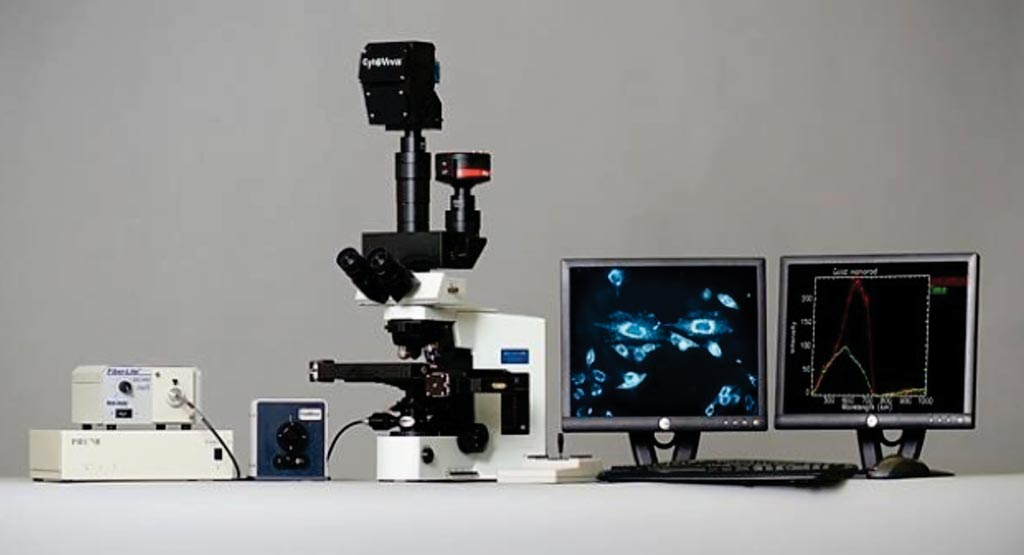New Biomarkers Provide Diagnostic Tool for AD
By LabMedica International staff writers
Posted on 09 Aug 2017
Alzheimer’s disease (AD) is an age-related neurodegenerative disorder that results in the gradual deterioration of specific brain regions that hinders the person’s ability to think, recall memories, learn, and perform daily tasks.Posted on 09 Aug 2017
Currently, AD is diagnosed using the “evaluate and eliminate” approach. With this strategy, patient history, physical exams, laboratory tests, imaging scans, and neurophysiological assessments are examined by doctors as a means to diagnose AD and determine its progression.

Image: The CytoViva hyperspectral imaging system (Photo courtesy of CytoViva).
Scientists at Ohio State University (Columbus, OH, USA) and their colleagues analyzed 34 cerebrospinal fluid (CSF) samples from 24 patients with AD and from 10 healthy individuals serving as controls. They analyzed 30 serum samples from 22 patients with AD and from eight healthy individuals serving as controls. The processed CSF samples were combined with rabbit-derived primary antibodies anti-Aβ(1–42) antibody) and anti-tau) and goat-derived anti-rabbit secondary antibody in immunofluorescence assays.
A CSF sample of 10 μL was dried on a slide glass surface for atomic force microscopy (AFM) nanomechanics characterization. Hyperspectral microscope imaging was used for particle visualization and analysis and using the system, images of micro-/nanoscale structures and micro-/nanoparticles were captured. Coated with gold and anti-Aβ(1–42) antibody, AFM tips were functionalized to specifically detect the Aβ-embedded proteins inside human serum. Serum or anti-Aβ(1–42) antibody was used to coat the substrates, respectively.
The scientists showed that showed that nanoscale physical properties of protein aggregates from the cerebral spinal fluid and blood of patients are altered during AD pathogenesis and that these properties can be used as a new class of “physical biomarkers”. Using a computational algorithm, developed to integrate these biomarkers and cognitive assessments, they demonstrated an approach to impartially diagnose AD and predict its progression.
Mingjun Zhang, PhD, DSc, a professor of Biomechanical Engineering, and lead investigator of the study said, “With a tool like this you may predict how fast this disease will go, and currently we can't do that, we just know everyone is different. Looking at multiple indicators of the disease all at once increases the reliability of the diagnosis and prognosis.” The study was published on July 28, 2017, in the journal Science Advances.
Related Links:
Ohio State University














